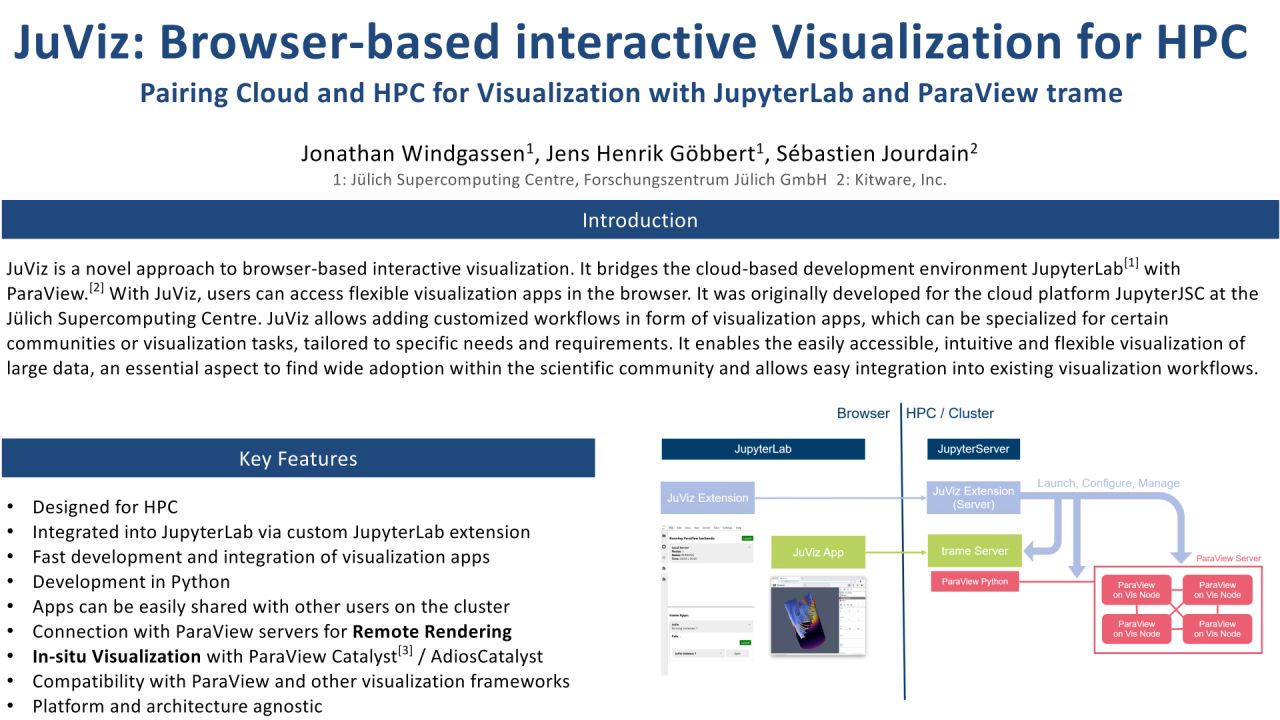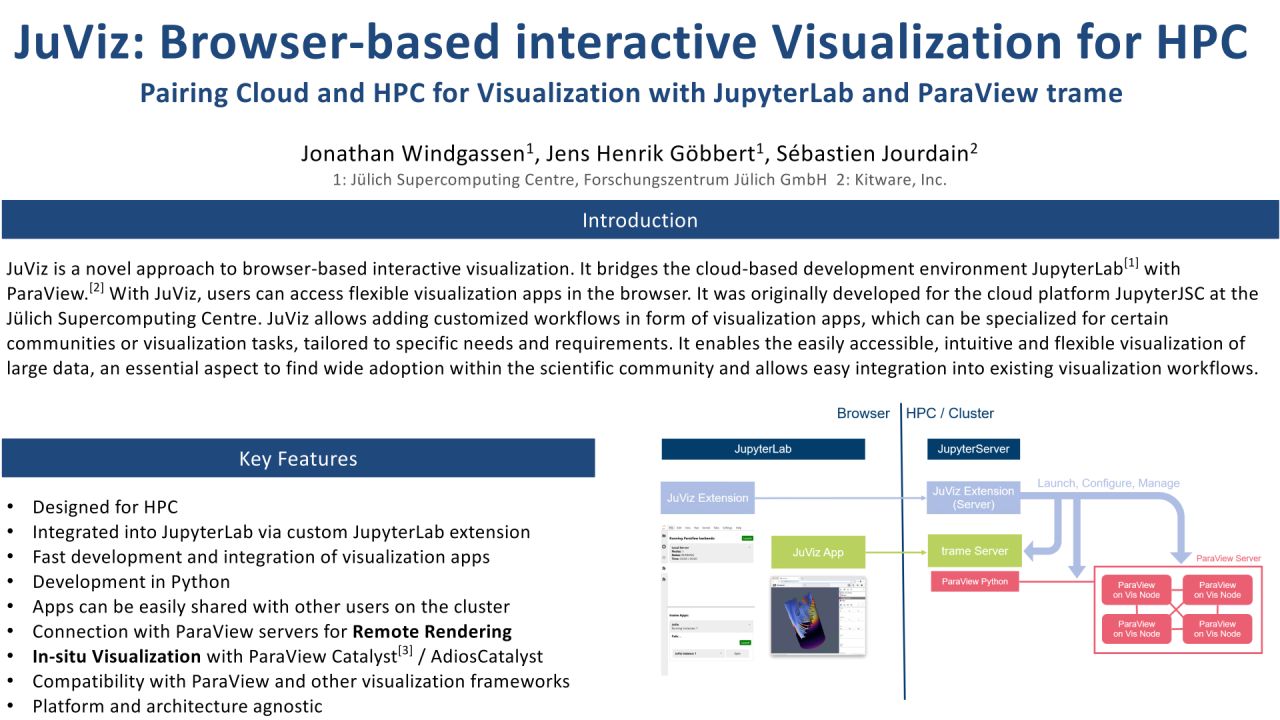

JuViz: Browser-Based Interactive Visualization for HPC
Monday, May 13, 2024 3:00 PM to Wednesday, May 15, 2024 4:00 PM · 2 days 1 hr. (Europe/Berlin)
Foyer D-G - 2nd floor
Research Poster
Application Workflows for DiscoveryVisualization and Virtual Reality
Information
Poster is on display and will be presented at the poster pitch session.
JuViz is a novel approach to browser-based interactive visualization for HPC. It bridges the cloud-based development environment JupyterLab with the visualization framework ParaView. With JuViz, users of the high-performance computing (HPC) systems can access flexible visualization apps in the browser. It relies on the framework trame and was originally developed for the cloud platform JupyterJSC at the Jülich Supercomputing Centre. Apps utilize ParaView as the visualization framework for remote rendering of the data on the HPC system. JuViz allows adding customized workflows in form of apps, which can be developed for certain communities or purposes. This empowers users to create web apps tailored to their specific needs and requirements. It enables the comfortable, easily accessible, intuitive, and flexible visualization of large data, an essential aspect to find wide adoption within the scientific community and be integrated into visualization workflows. The setup is demonstrated with the trame ESM-Slicer — a trame app for the Earth System Modelling community — which can visualize atmospheric and climate data.
Contributors:
JuViz is a novel approach to browser-based interactive visualization for HPC. It bridges the cloud-based development environment JupyterLab with the visualization framework ParaView. With JuViz, users of the high-performance computing (HPC) systems can access flexible visualization apps in the browser. It relies on the framework trame and was originally developed for the cloud platform JupyterJSC at the Jülich Supercomputing Centre. Apps utilize ParaView as the visualization framework for remote rendering of the data on the HPC system. JuViz allows adding customized workflows in form of apps, which can be developed for certain communities or purposes. This empowers users to create web apps tailored to their specific needs and requirements. It enables the comfortable, easily accessible, intuitive, and flexible visualization of large data, an essential aspect to find wide adoption within the scientific community and be integrated into visualization workflows. The setup is demonstrated with the trame ESM-Slicer — a trame app for the Earth System Modelling community — which can visualize atmospheric and climate data.
Contributors:
Format
On-site
